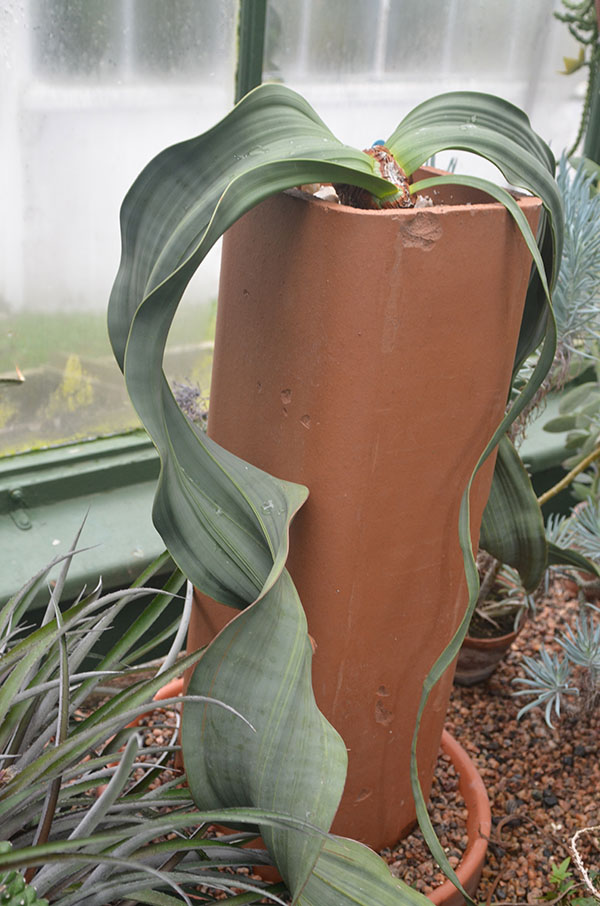| General Description | The core of the plant can be cooked in hot ashes and eaten. |
| Shape | Two, large, coarse, strap-like leaves originating from a central caudex. |
| Cultivation | Grow in a clay sewer pipe, upended (see image) to accommodate the extended tap root; water very sparingly. |
| Pests | Rhino and antelope may chew the leaves, often rejecting the coarse fibre, however harm to the plant seldom occurs since the meristematic tissue is rarely destroyed. |
| Notable Specimens | The largest recorded Welwitschia can be found in the Messum Mountains, Namibia and has reached a height of 1.8 m. |
| Habitat | In the dry deserts of Namibia and Angola where coastal fogs are present often long dry watercourses and occasionally on elevated slopes or cliffs. |
| Leaf Description | Two broad, strap-like, evergreen leaves are often shredded by desert winds are attached to a woody caudex. These leaves may each reach up to 2 m in length and like grass leaves have their meristematic tips at the base and continue to grow even though the leaf tips may be abraded by desert sands. The leaves are CAM photosynthetic. |
| Flower Description | The plant is a gymnosperm. The male flower has a sterile modified pistil that exudes nectar with up to a 50% sugar content from a modified pistil-like structure. It is suspected that the plant may be pollinated by wasps because of the rich nectar produced and the limited amount of pollen (most gynosperms are wind pollinated). The female has exposed stigma's and produces minimal amounts of the nectar. |
| Fruit Description | The plants are dioecious. The male cones are salmon coloured, small and oblong in shape while the female cones are larger, blue-green in colour and have a distinct taper to them. The female cones disintegrate to disperse small seeds ( 36 x 25 mm ) with a papery wing attached. The seeds seldom germinate unless there are several days of consistent rain which is rare, hence why many plants in a colony are the same age. Most seeds are lost to fungal infections and desert wildlife. |
